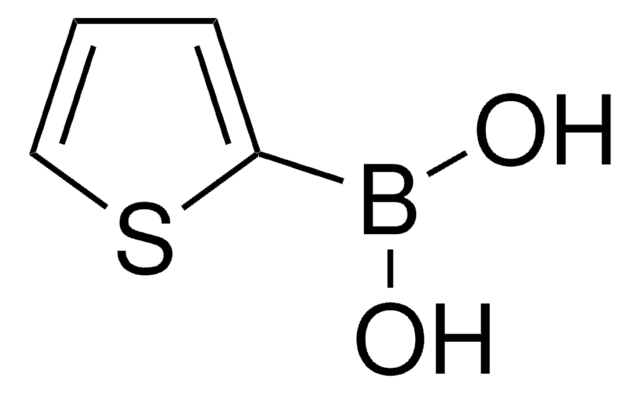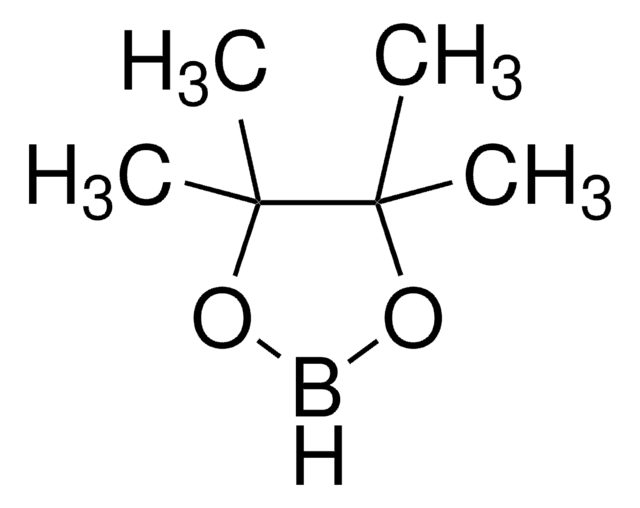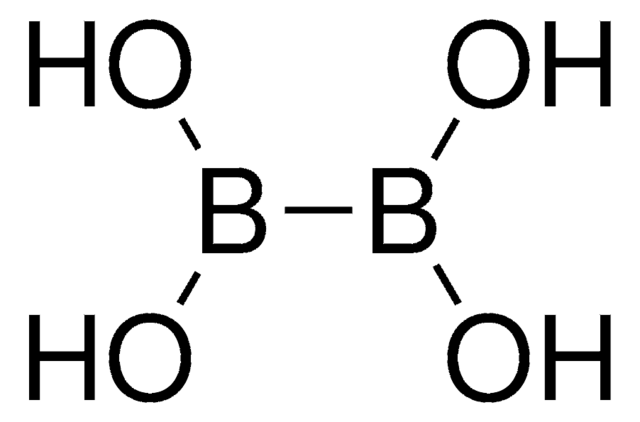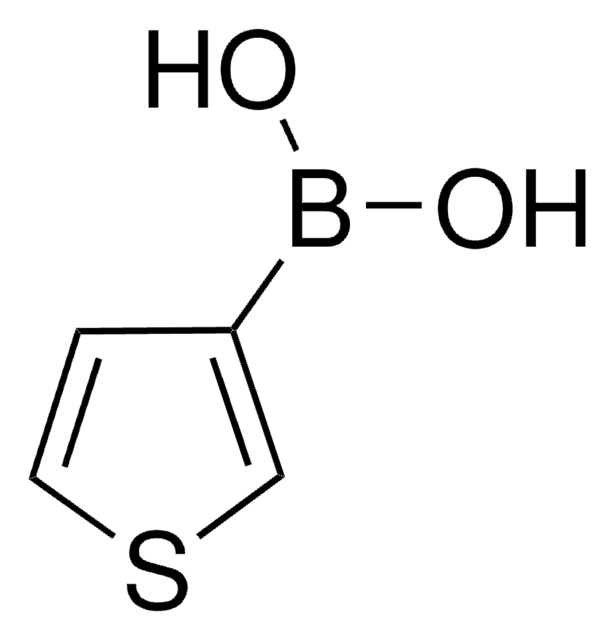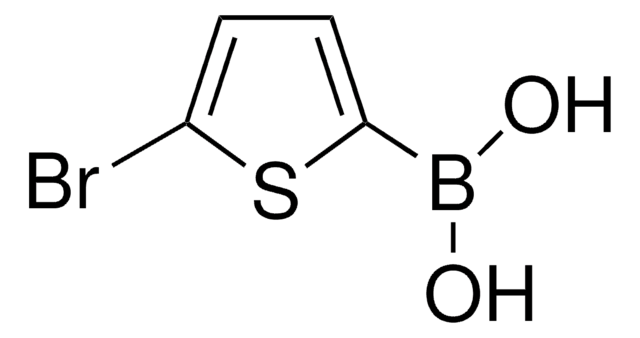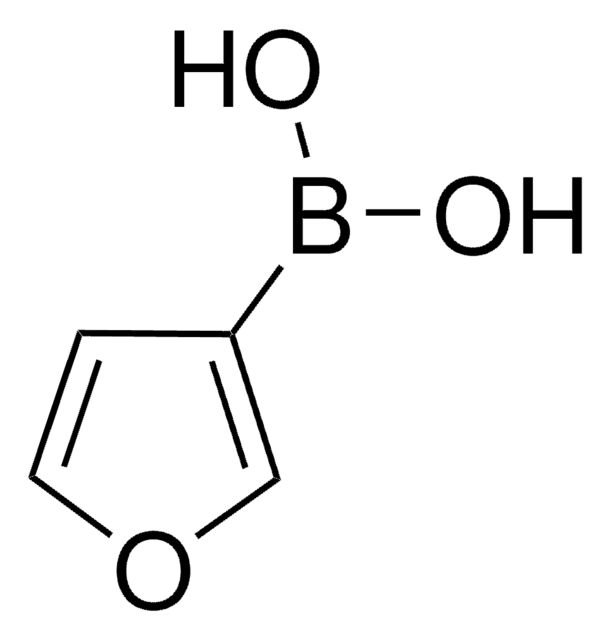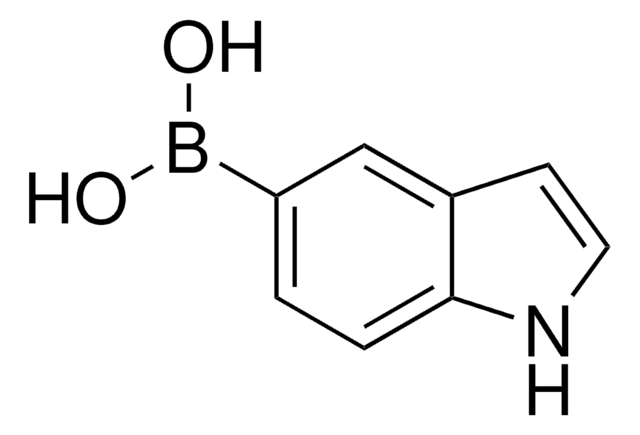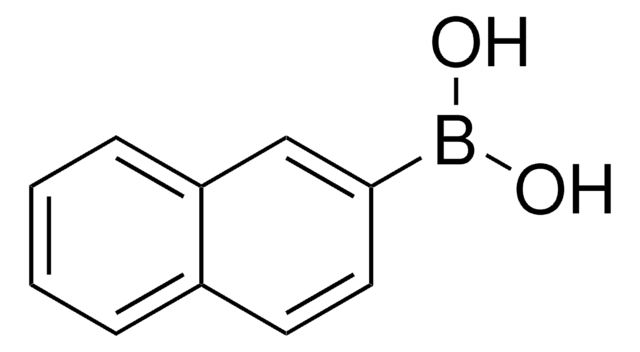Kluczowe dokumenty
499978
Benzo[b]thien-2-ylboronic acid
≥95%
Synonim(y):
1-Benzothiophene-2-boronic acid, Benzothiophen-2-ylboronic acid, Thianaphthene-2-boronic acid
About This Item
Polecane produkty
Poziom jakości
Próba
≥95%
mp
256-260 °C (lit.)
ciąg SMILES
OB(O)c1cc2ccccc2s1
InChI
1S/C8H7BO2S/c10-9(11)8-5-6-3-1-2-4-7(6)12-8/h1-5,10-11H
Klucz InChI
YNCYPMUJDDXIRH-UHFFFAOYSA-N
Zastosowanie
- PDE4 inhibitors
- Chemoselective modification of oncolytic adenovirus
- Synthesis of phosphorescent sensor for quantification of copper(II) ion
- UV promoted phenanthridine syntheses
- Preparation of CYP11B1 inhibitors for treatment of cortisol dependent diseases
- Suzuki-Miyaura cross-coupling reactions
Inne uwagi
Hasło ostrzegawcze
Warning
Zwroty wskazujące rodzaj zagrożenia
Zwroty wskazujące środki ostrożności
Klasyfikacja zagrożeń
Acute Tox. 4 Oral - Aquatic Chronic 3
Kod klasy składowania
11 - Combustible Solids
Klasa zagrożenia wodnego (WGK)
WGK 3
Temperatura zapłonu (°F)
Not applicable
Temperatura zapłonu (°C)
Not applicable
Środki ochrony indywidualnej
Eyeshields, Gloves, type N95 (US)
Wybierz jedną z najnowszych wersji:
Certyfikaty analizy (CoA)
Nie widzisz odpowiedniej wersji?
Jeśli potrzebujesz konkretnej wersji, możesz wyszukać konkretny certyfikat według numeru partii lub serii.
Masz już ten produkt?
Dokumenty związane z niedawno zakupionymi produktami zostały zamieszczone w Bibliotece dokumentów.
Klienci oglądali również te produkty
Produkty
This brochure contains a comprehensive selection of boronic acids, boronic acid esters, diboron esters, and transition-metal catalysts useful for the Suzuki–Miyaura coupling reaction
Nasz zespół naukowców ma doświadczenie we wszystkich obszarach badań, w tym w naukach przyrodniczych, materiałoznawstwie, syntezie chemicznej, chromatografii, analityce i wielu innych dziedzinach.
Skontaktuj się z zespołem ds. pomocy technicznej![[1,1′-Bis(diphenylphosphino)ferrocene]dichloropalladium(II)](/deepweb/assets/sigmaaldrich/product/structures/130/734/8846aa26-1858-458a-998d-8c306c13bf0f/640/8846aa26-1858-458a-998d-8c306c13bf0f.png)
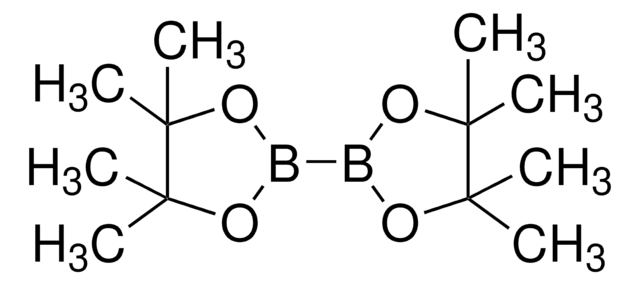

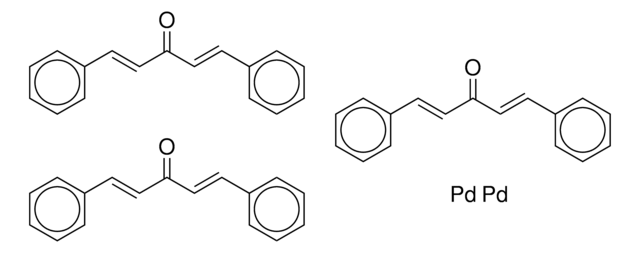
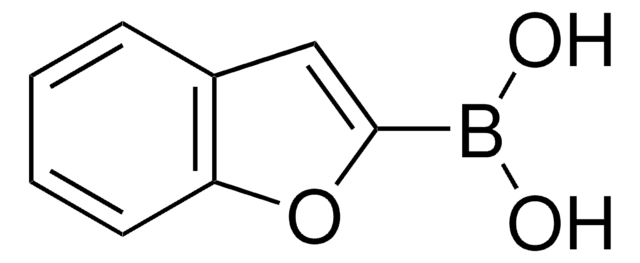
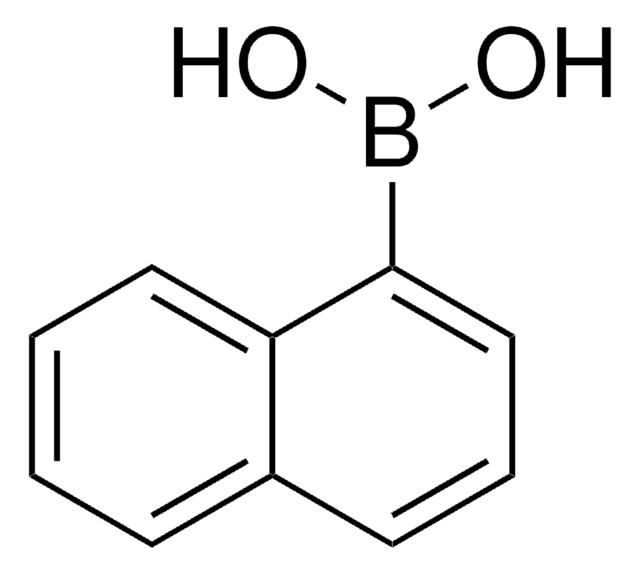
![Benzo[b]thien-3-ylboronic acid ≥95.0%](/deepweb/assets/sigmaaldrich/product/structures/136/961/9ddc053e-3519-47d3-be03-95715d131635/640/9ddc053e-3519-47d3-be03-95715d131635.png)
